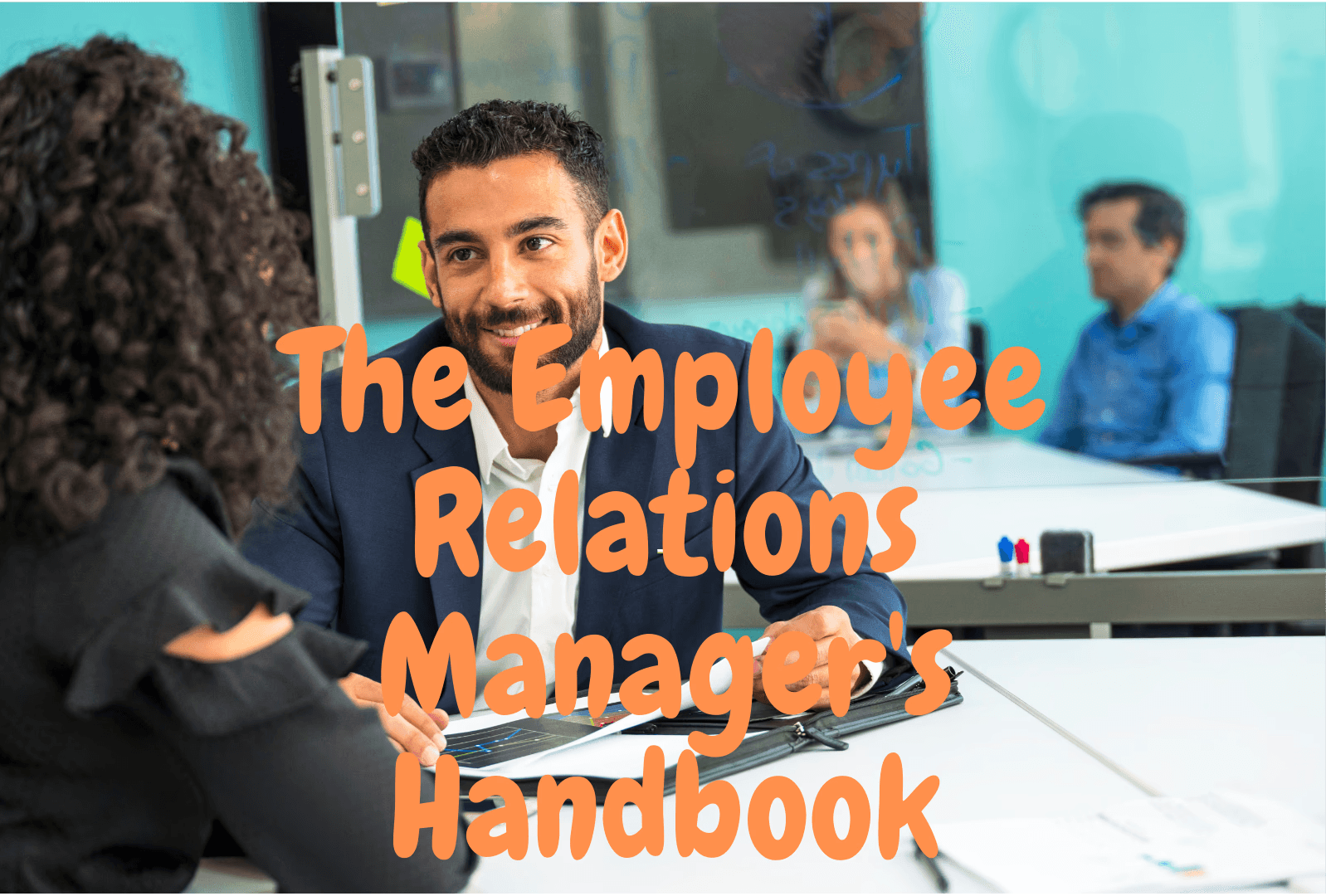The Employee Relations Manager's Handbook: Skills, Duties, and Best Practices
28 juin 2024
James Dean
Employee relations are a critical component of any successful organization, ensuring that the workplace remains harmonious and productive. An Employee Relations Manager plays a key role in maintaining and enhancing this aspect of a company. This guide provides an in-depth look at the responsibilities, skills, and impact of an Employee Relations Manager, complete with tips for aspiring professionals in this field.
What is an Employee Relations Manager?
An Employee Relations Manager is responsible for fostering positive relationships between employees and management, addressing workplace issues, and ensuring that the company complies with labor laws and regulations. This role involves a mix of HR functions, conflict resolution, policy development, and strategic planning to create a supportive and efficient work environment.
Key Responsibilities
Conflict Resolution: Mediating disputes between employees and management, and resolving conflicts to maintain a positive work environment.
Policy Development: Developing, implementing, and updating HR policies and procedures that promote fair treatment and compliance with labor laws.
Employee Support: Providing guidance and support to employees on workplace issues, grievances, and career development.
Training and Development: Designing and conducting training programs to improve employee relations and promote understanding of company policies.
Compliance: Ensuring the organization adheres to labor laws, regulations, and company policies.
Performance Management: Assisting with performance evaluations and disciplinary actions, ensuring fair and consistent practices.
Employee Engagement: Developing initiatives to boost employee morale and engagement, such as recognition programs and team-building activities.
Essential Skills for an Employee Relations Manager
Communication: Strong verbal and written communication skills to effectively mediate disputes and convey policies.
Problem-Solving: Ability to identify issues and implement solutions quickly and efficiently.
Empathy: Understanding and addressing employee concerns with sensitivity and fairness.
Negotiation: Skilled in negotiating and facilitating agreements between conflicting parties.
Knowledge of Labor Laws: Thorough understanding of labor laws and regulations to ensure compliance and guide policy development.
Organizational Skills: Ability to manage multiple tasks and projects effectively.
Analytical Thinking: Capability to analyze data and trends to inform strategic decisions and policy updates.
Impact of an Employee Relations Manager
Improved Workplace Atmosphere: By resolving conflicts and fostering positive relationships, Employee Relations Managers contribute to a more harmonious and productive work environment.
Increased Employee Retention: Effective employee relations strategies can lead to higher job satisfaction and retention rates.
Enhanced Compliance: Ensuring adherence to labor laws and regulations protects the company from legal issues and promotes fair treatment.
Boosted Morale and Engagement: Programs and initiatives designed to recognize and reward employees can significantly enhance morale and engagement.
Steps to Become an Employee Relations Manager
Education: Obtain a bachelor’s degree in human resources, business administration, or a related field. Advanced degrees or certifications in HR can be advantageous.
Experience: Gain experience in HR roles, focusing on employee relations, conflict resolution, and policy development.
Skills Development: Enhance your communication, problem-solving, and negotiation skills through practice and training.
Certifications: Consider obtaining certifications such as the SHRM-CP (Society for Human Resource Management-Certified Professional) or PHR (Professional in Human Resources).
Networking: Join professional organizations and attend industry events to connect with other HR professionals and stay updated on best practices.

Frequently Asked Questions
Q1: What qualifications are needed to become an Employee Relations Manager?
Typically, a bachelor’s degree in human resources, business administration, or a related field is required. Advanced degrees and certifications can enhance career prospects.
Q2: How does an Employee Relations Manager handle workplace conflicts?
They use mediation and conflict resolution skills to address disputes, ensuring fair treatment and seeking mutually acceptable solutions.
Q3: What is the difference between an Employee Relations Manager and an HR Manager?
While both roles overlap, an Employee Relations Manager focuses specifically on fostering positive employee-management relations, addressing grievances, and ensuring compliance with labor laws. An HR Manager oversees broader HR functions, including recruitment, payroll, and benefits administration.
Q4: What tools do Employee Relations Managers use?
They use HR management systems, conflict resolution tools, and communication platforms to manage their responsibilities effectively.
Q5: How important is understanding labor laws for this role?
Extremely important. Knowledge of labor laws is crucial to ensure compliance, guide policy development, and protect the company from legal issues.
Q6: Can an Employee Relations Manager work remotely?
Yes, many aspects of the role, such as policy development, training, and conflict resolution, can be managed remotely. However, in-person interactions may still be necessary for certain situations.
Q7: What are the biggest challenges faced by Employee Relations Managers?
Common challenges include handling difficult conflicts, ensuring consistent policy enforcement, and staying updated with changing labor laws and regulations.
Q8: How do Employee Relations Managers contribute to employee engagement?
They develop and implement initiatives that recognize and reward employees, provide support and development opportunities, and ensure a positive work environment.
Q9: What role do Employee Relations Managers play in performance management?
They assist in the development and enforcement of performance management processes, ensuring fair evaluations and addressing performance issues constructively.
Q10: How do Employee Relations Managers stay updated on best practices?
They attend industry events, participate in professional organizations, pursue ongoing education, and keep abreast of changes in labor laws and HR trends.
Q11: How can Employee Relations Managers effectively handle cultural differences within a team?
They need to develop cultural competence by educating themselves on different cultural norms, facilitating open dialogues about cultural differences, and promoting an inclusive environment where all cultural perspectives are valued.
Q12: How do Employee Relations Managers manage remote team dynamics?
They maintain regular communication through video calls, virtual team-building activities, and clear documentation of policies and expectations. Ensuring remote employees feel included and valued is crucial.
Q13: What role does technology play in employee relations management?
Technology facilitates efficient communication, documentation, and conflict resolution. Tools like HR management software, communication platforms, and data analytics help Employee Relations Managers track issues, gather feedback, and implement effective strategies.
Q14: How can Employee Relations Managers build trust within the organization?
By being transparent, consistently fair, actively listening to employees, and following through on commitments, they can build and maintain trust within the organization.
Q15: What strategies can be used to measure the effectiveness of employee relations programs?
Regular employee surveys, feedback sessions, tracking conflict resolution outcomes, and analyzing employee turnover rates are effective strategies to measure the success of employee relations initiatives.
Additional Guidelines and Options
Professional Development: Consider ongoing education and certifications through organizations like SHRM and HRCI.
Networking: Join HR professional groups on platforms like LinkedIn to stay connected and share insights.
Resource Utilization: Utilize resources from HR Dive and U.S. Department of Labor for the latest updates and best practices.
Advanced Tips
Continuous Learning: Regularly update your knowledge on labor laws, HR trends, and conflict resolution techniques.
Feedback Mechanisms: Implement feedback systems to gather employee insights and improve relations strategies.
Mentorship: Seek mentorship from experienced HR professionals to gain insights and advance your career.
Strategic Planning: Align employee relations strategies with overall business goals to enhance organizational performance.
Data Analytics: Use data analytics to identify trends and proactively address potential employee relations issues.
Final Thoughts: The Unsung Heroes of the Workplace
Picture this: the bustling corridors of a thriving company, where the hum of collaboration and productivity fills the air. Amidst this dynamic environment stands the Employee Relations Manager—often the unsung hero ensuring that the workplace remains a harmonious, compliant, and vibrant space.
An Employee Relations Manager is not just a mediator but a bridge-builder. They weave the intricate web of relationships between employees and management, ensuring that trust and mutual respect are the cornerstones of the organizational culture. They are the first responders in times of conflict, the architects of effective policies, and the champions of a positive work environment.
Take Sarah, for instance. As an aspiring Employee Relations Manager, she navigated her way through the maze of HR roles, learning the ropes and understanding the pulse of employee dynamics. She spent years honing her skills, from conflict resolution to policy development, and always kept an eye on the latest industry trends and best practices. Her journey wasn't always smooth—there were challenging days and difficult conversations—but each experience added to her toolkit, preparing her for the pivotal role she now embraces.
Sarah's story is a testament to the vital importance of an Employee Relations Manager. Their role is crucial in maintaining a productive and compliant workplace, where every employee feels valued and heard. They are the silent warriors who ensure that the gears of the organization run smoothly, addressing issues before they escalate and fostering a culture of continuous improvement.
For those inspired by this path, remember that becoming an effective Employee Relations Manager is a journey of continuous learning and growth. Embrace opportunities to gain relevant experience, whether through internships, volunteer work, or entry-level HR positions. Invest in developing your skills—attend workshops, pursue certifications, and never stop learning.
Stay curious and connected with the industry. The world of employee relations is ever-evolving, with new challenges and innovations constantly emerging. By staying informed and adaptable, you'll be well-equipped to handle the complexities of the role and drive positive change within your organization.
In the end, the role of an Employee Relations Manager is not just about managing policies and resolving conflicts—it's about creating a workplace where every individual can thrive. It's a role that, when executed with passion and dedication, can transform the fabric of an organization, leading to unparalleled success and a truly engaged workforce.
So, if you're considering a career as an Employee Relations Manager, take a leaf out of Sarah's book. Dive into the field with enthusiasm, equip yourself with knowledge, and above all, remember the profound impact you can have on the lives of employees and the overall success of the organization. Your journey may be challenging, but it will undoubtedly be rewarding.





